Architect César Manrique championed, and helped preserve, Lanzarote's unique landscape and farmers are now producing distinctive wines and cheeses from its volcanic soil.
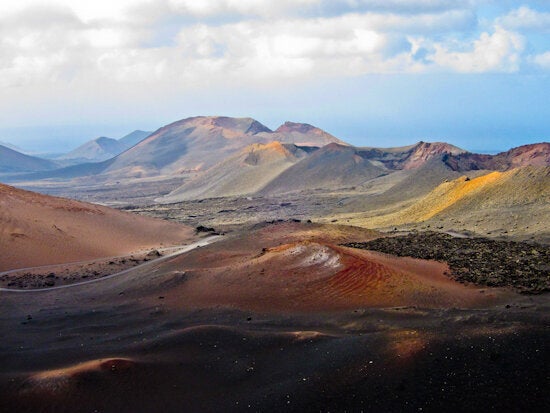
Lanzarote is a haunting island of dormant volcanoes, its surface covered in ash from centuries of eruptions although the last one happened back in 1824. As the Canary Island nearest to Africa, there's little rainfall and strong north-easterly trade winds. You'd think that nothing could grow here but the volcanic ash absorbs moisture from morning mists and it trickles down to the soil below. Vines are planted in pits as deep as three metres so the roots can take advantage of this water and they're surrounded by semi-circular stone walls to protect the plants from the wind. This method produces 2 or 3 times less than traditional vineyards but there's now a move to plant in rows to increase production.
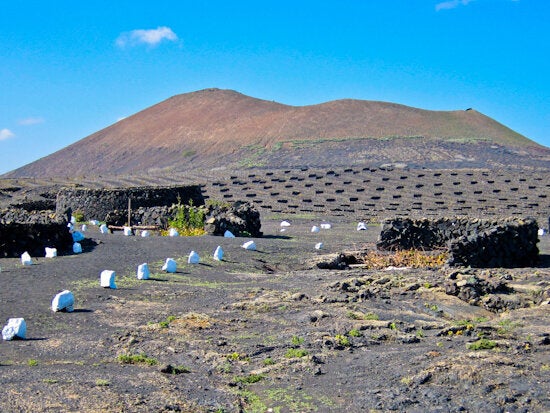
El Grifo Winery
El Grifo dates back to 1775 and was the Canaries' first vineyard and one of the oldest in Spain. They've preserved the old winery, with its collection of 19th century machinery, as a museum, and you can combine a visit with a tasting. The majority of wines are white and their dry Malvasia is particularly good. They also make a sweet wine called Canari, blended from 3 vintages of Malvasia, 1956, 1970 and 1997, all aged in oak. With a 17% alcohol content, this is an excellent dessert wine.

Stratvs Winery
Just up the road, the Stratvs Winery was opened in 2008 and is the newest on the island. The designer complex also contains 2 restaurants and a shop and, outside, they've exposed a section of ground to illustrate how the vines are grown. They also produce Malvasia but I am particularly intrigued by the reds. Their Reserva Crianza 2007 is a blend of 60% Tinta Común and 40 % Listán Negra and aged in oak for 8 months, then 18 months in the bottle. It has aromas of mulberry, dried figs, liquorice, dry fruits and spices and you can certainly taste the tannins. It goes well with the local cheese which the same owners produce nearby.
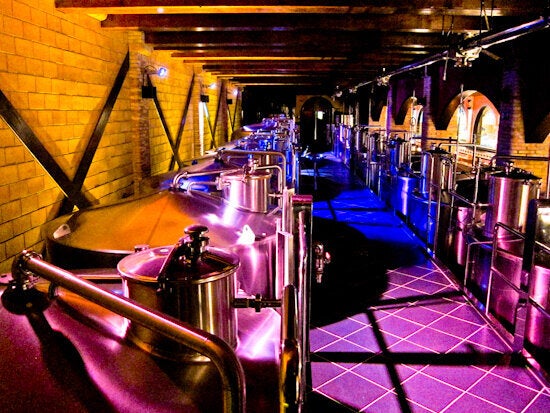
Finca de Uga Cheese
Finca de Uga is their cheese farm with 300 goats, 3000 sheep and 50 cows. The goats and sheep are local breeds but the cows are Jerseys, bred to produce creamy milk. I must say all the animals are in peak condition and it shows in the flavour of the 15 varieties of cheese they produce. The majority are unpasteurised and special mention must be made of the Bodega, made from a mixture of goat and sheep milk, and aged 11 months. They supply many restaurants and Casa Brigida, in Playa Blanca, serves a delicious goat cheese wrapped in filo pastry with coriander oil and palm honey.
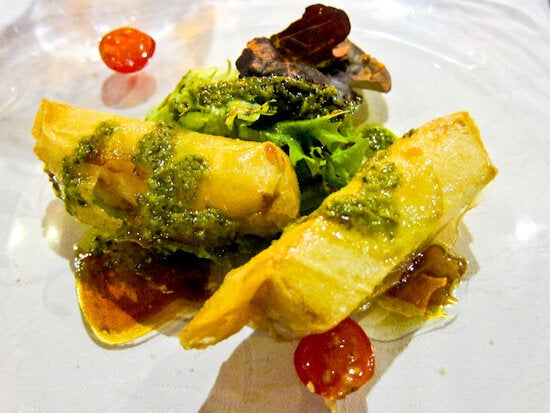
Seafood
Of course being an island, Lanzarote is well supplied with fresh fish and Cherne or Wreckfish, a type of grouper, is the most common. I attend a cooking class in the kitchens of Isla de Lobos restaurant in the Princesa Yaiza hotel with chef Carlos Pérez . He's going to teach me how to make Arroz Caldoso de Marisco, a rice seafood stew, and I must say he's supplied the freshest of ingredients.
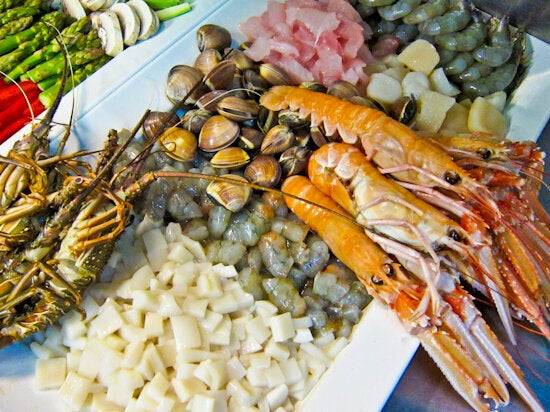
First I fry small halved lobsters for 5 minutes, remove and add prawns and diced squid. After a few minutes, I take out the prawns then quickly fry chopped garlic before adding a spoonful of sweet red paprika, crushed tomato puree and a green mix of parsley and olive oil. Rice is next, fried quickly, then a ladle of fish stock goes in and I boil it vigorously for 5 minutes. After turning down the heat it's left to simmer for another 10 minutes and then pieces of Cherne and the prawns go in for the last seconds. The result is moist, rice still slightly crunchy and full of flavour. It seems that Carlos could be up for a Michelin star in the near future and I must say he deserves it.
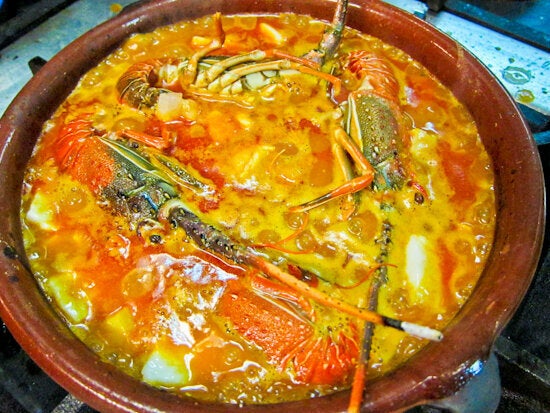
César Manrique
The architect and painter, César Manrique, almost single-handedly ensured that Lanzarote avoided destructive tourist development and his buildings and sculptures are a feature of the island. It's worth visiting the lava tunnel of Jameos del Agua which stages live music beside a subterranean lake or tasting volcano grilled food at Restaurant El Diablo in Timanfaya National Park. In August they opened his house and studio in Haria, preserved exactly as he left it, before he was tragically killed in a car accident in 1992. It's slightly eerie as you expect him to suddenly appear, asking what you would like to drink, but the visit sheds light on this extraordinary man.

El Risco
Perhaps the best meal I eat is at El Risco by Famara Beach in the north of the island. The setting is spectacular with a view of rugged cliffs and huge waves but the food is even better. Everything is sourced locally so I enjoy deep fried flakes of Moray eel with sweet potato crisps and gloriously fresh prawns cooked on a bed of salt as starters. Then it's time for Ropa Vieja, a sort of Canarian shepherd's pie, with shreds of lamb, onions, tomatoes and chickpeas with cubed potatoes. I think nothing can top this but a foot long Sama fish (Sea Bream) caught in the morning is tremendous and the cheeks, which they serve separately, are particularly delicious.
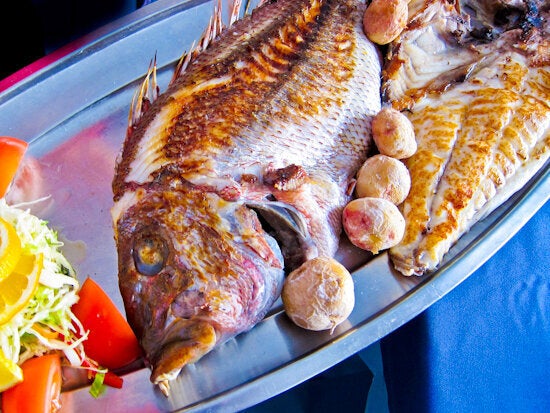
British Airways flies direct to Lanzarote twice a week from Gatwick.
The Princesa Yaiza Suite Hotel Resort makes a comfortable base for exploring the island.
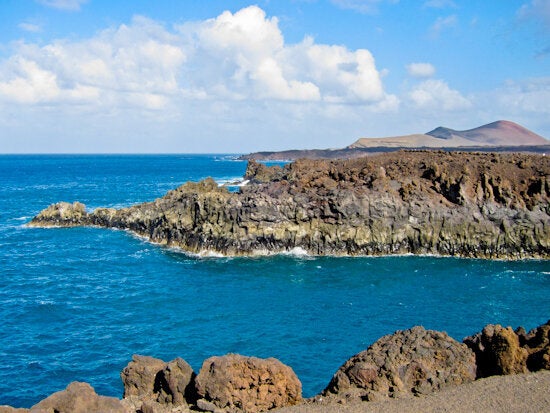
Turismo Lanzarote has information about the island.
Turespaña has information about Spain.
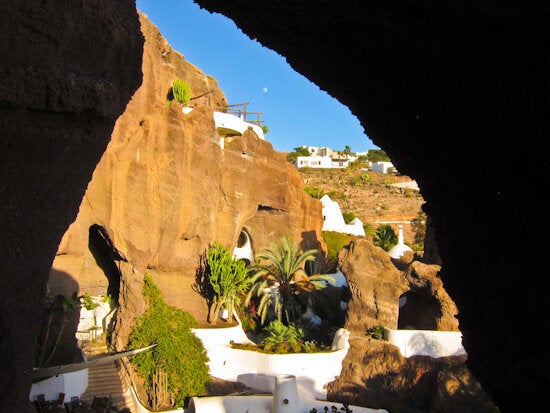
All pictures copyright Rupert Parker